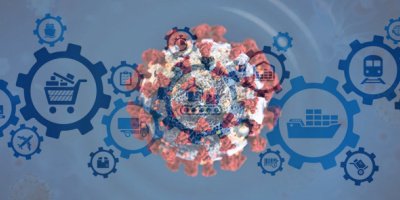Last Tuesday, IBM made its grand entrance into the blade server market by announcing BladeCenter, a modular system that can pack up to 168 Intel Xeon processors into a single 19-inch rack. BladeCenter and similar products will dramatically reduce IT costs for companies that own hundreds of Intel servers. However, it will be much harder for server vendors to build a financial justification for the current generation of blades among mid-market organizations.
Blade servers represent the IT industry's latest effort to pack the greatest performance into the smallest space at the lowest possible price. Unlike traditional rack-mounted servers, in which each server chassis contains a single motherboard, blade servers use a chassis that supports multiple motherboards, otherwise known as "blades." Each blade houses one or more processors, an integrated network controller and, in many cases, one or two disk drives. The chassis that houses the blades provides everything else. This includes power supplies, cooling, network attachment, media bays, and a single console and keyboard to manage all the blades in the chassis.
By sharing these components across a larger number of processors, blade server vendors can squeeze more CPUs and processor performance into a rack than traditional rack-mounted servers can. This same sharing allows blade servers to consume less power, air conditioning, and floor space on a per-processor basis. Blade servers can also (at least in theory) sell at a lower price per unit of performance because of component sharing. As we shall learn later, however, those lower prices are not yet materializing in many cases.
Blade servers come from several vendors in many configurations. They vary widely in the number of CPUs that they can fit into a standard 42U rack space. On the low end, the Dell PowerEdge 1655MC houses 84 CPUs per rack. On the high end, RLX Technologies offers models that can pack up to 336 CPUs per rack. RLX achieves this density by using relatively slow Transmeta Crusoe processors that consume less power and generate less heat than other CPUs. By contrast, other blade server vendors use faster, hotter Intel Pentium III chips. In either case, most blades house one or two processors. This makes them suitable for front-end tasks such as Web serving, mail serving, firewalls, and DNS serving.
IBM's BladeCenter takes the "faster and hotter" approach when it comes to processor packaging. Like most blade servers, it supports Windows, Linux, and Novell operating systems. However, it distinguishes itself from the rest of the blade server pack in the following respects:
- Intel Xeon processors--BladeCenter is the first blade server I know of that runs on Xeon processors rather than the slower Pentium III. A single 7U-high BladeCenter chassis can house 14 blades, each containing one or two Xeons running at either 2.0 or 2.4 GHz with up to 8 GB of ECC chipkill memory. Up to 168 of these CPUs can fit in a single 42U rack--twice as many as are possible using traditional rack-mounted servers. By using the faster Xeons, BladeCenter can offer adequate scalability not only to serve Web pages or emails, but also to support Web application servers and collaborative computing solutions such as Domino.
- Superior reliability, availability, and serviceability (RAS)--Like most of IBM's Intel servers, BladeCenter exceeds the competition in the RAS arena. The BladeCenter chassis offers fully redundant power, cooling, and network connections. The system provides nearly instant failover capabilities for almost every device. If a blade requires technical service, lightpath diagnostics identify the failed component.
- Integrated Gigabit Ethernet switch--IBM offers an inexpensive Gigabit Ethernet switch that resides in the BladeCenter chassis and that customers can manage along with processor blades from a single console. Other blade servers require external switches with their own management consoles.
These technical refinements allow BladeCenter to offer high levels of performance per square foot while also meeting the scalability and reliability requirements of most enterprises. While many blade servers have excellent performance density, they will not match up to BladeCenter on the scalability or reliability fronts. This is one reason why Intel has formed an alliance with IBM under which the two vendors will codevelop and license blade server technologies to other vendors. Clearly, Intel sees IBM as a leader in this emerging market.
Blade servers have the potential to dramatically change the way vendors architect servers, not to mention how customers deploy and use them. Adding computing capacity or reconfiguring that capacity to handle different tasks could become as quick and easy as sliding blades in and out of chassis slots, then replicating a system image to the redeployed blades. Blade servers could also spur another wave of server consolidation as customers seek to reduce power, cooling, space, and IT management costs. However, mid-market organizations should take a long, hard look at the new technology before they make any commitments. I'll explain why in next week's issue, so stay tuned.
Lee Kroon is a Senior Industry Analyst for Andrews Consulting Group, a firm that helps mid-sized companies manage business transformation through technology. You can reach him at






















 More than ever, there is a demand for IT to deliver innovation. Your IBM i has been an essential part of your business operations for years. However, your organization may struggle to maintain the current system and implement new projects. The thousands of customers we've worked with and surveyed state that expectations regarding the digital footprint and vision of the company are not aligned with the current IT environment.
More than ever, there is a demand for IT to deliver innovation. Your IBM i has been an essential part of your business operations for years. However, your organization may struggle to maintain the current system and implement new projects. The thousands of customers we've worked with and surveyed state that expectations regarding the digital footprint and vision of the company are not aligned with the current IT environment. TRY the one package that solves all your document design and printing challenges on all your platforms. Produce bar code labels, electronic forms, ad hoc reports, and RFID tags – without programming! MarkMagic is the only document design and print solution that combines report writing, WYSIWYG label and forms design, and conditional printing in one integrated product. Make sure your data survives when catastrophe hits. Request your trial now! Request Now.
TRY the one package that solves all your document design and printing challenges on all your platforms. Produce bar code labels, electronic forms, ad hoc reports, and RFID tags – without programming! MarkMagic is the only document design and print solution that combines report writing, WYSIWYG label and forms design, and conditional printing in one integrated product. Make sure your data survives when catastrophe hits. Request your trial now! Request Now. Forms of ransomware has been around for over 30 years, and with more and more organizations suffering attacks each year, it continues to endure. What has made ransomware such a durable threat and what is the best way to combat it? In order to prevent ransomware, organizations must first understand how it works.
Forms of ransomware has been around for over 30 years, and with more and more organizations suffering attacks each year, it continues to endure. What has made ransomware such a durable threat and what is the best way to combat it? In order to prevent ransomware, organizations must first understand how it works. Disaster protection is vital to every business. Yet, it often consists of patched together procedures that are prone to error. From automatic backups to data encryption to media management, Robot automates the routine (yet often complex) tasks of iSeries backup and recovery, saving you time and money and making the process safer and more reliable. Automate your backups with the Robot Backup and Recovery Solution. Key features include:
Disaster protection is vital to every business. Yet, it often consists of patched together procedures that are prone to error. From automatic backups to data encryption to media management, Robot automates the routine (yet often complex) tasks of iSeries backup and recovery, saving you time and money and making the process safer and more reliable. Automate your backups with the Robot Backup and Recovery Solution. Key features include: Business users want new applications now. Market and regulatory pressures require faster application updates and delivery into production. Your IBM i developers may be approaching retirement, and you see no sure way to fill their positions with experienced developers. In addition, you may be caught between maintaining your existing applications and the uncertainty of moving to something new.
Business users want new applications now. Market and regulatory pressures require faster application updates and delivery into production. Your IBM i developers may be approaching retirement, and you see no sure way to fill their positions with experienced developers. In addition, you may be caught between maintaining your existing applications and the uncertainty of moving to something new. IT managers hoping to find new IBM i talent are discovering that the pool of experienced RPG programmers and operators or administrators with intimate knowledge of the operating system and the applications that run on it is small. This begs the question: How will you manage the platform that supports such a big part of your business? This guide offers strategies and software suggestions to help you plan IT staffing and resources and smooth the transition after your AS/400 talent retires. Read on to learn:
IT managers hoping to find new IBM i talent are discovering that the pool of experienced RPG programmers and operators or administrators with intimate knowledge of the operating system and the applications that run on it is small. This begs the question: How will you manage the platform that supports such a big part of your business? This guide offers strategies and software suggestions to help you plan IT staffing and resources and smooth the transition after your AS/400 talent retires. Read on to learn:
LATEST COMMENTS
MC Press Online